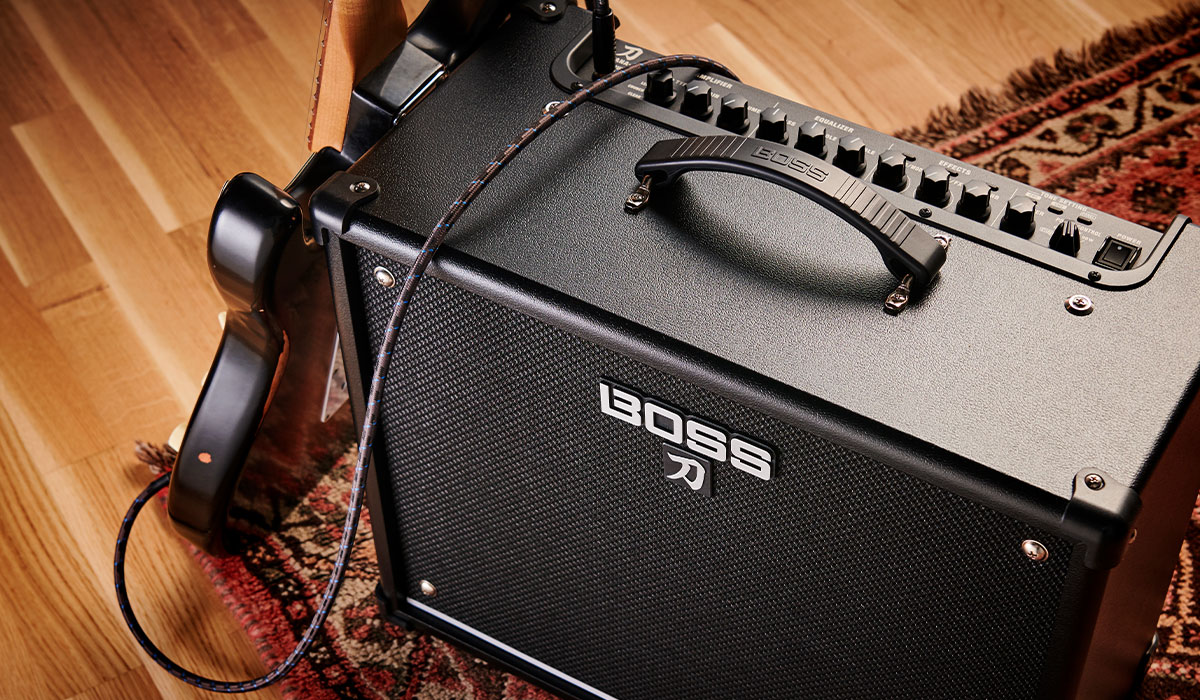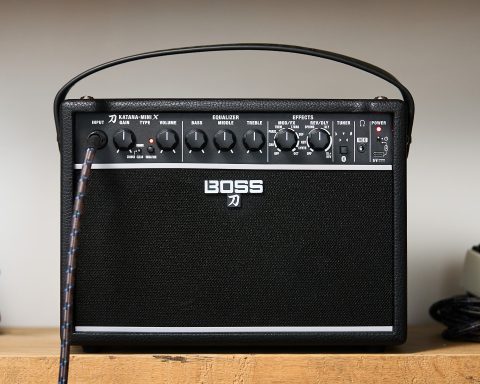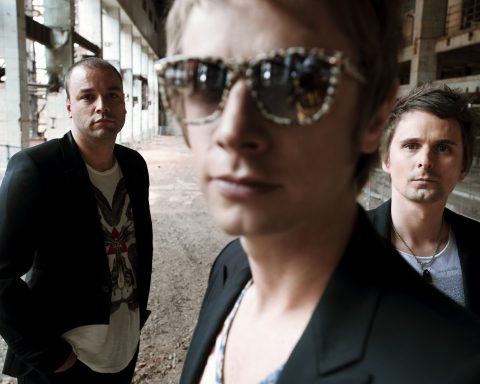Guitarists have used the Brown Sound as tone shorthand since the term emerged in the late ’70s/early ’80s. The early history of the term connects to one of the biggest guitar heroes of all time. However, in the years since, the word “brown” in reference to guitar tone has become a part of the everyday lexicon of guitar players.
It now embodies, in a single word, the perfect electric guitar tone. But what exactly does the Brown Sound mean and how does a guitar tone refer to sounding like a color? Let’s take a look at the origins of the Brown Sound and how it has become an accepted measure of great guitar sound.
it starts with evh
When Van Halen released their eponymous album in 1978, it was immediately clear that rock music had changed forever. The opening chords unleashed a massive sound previously unheard by an unsuspecting public.
The late Eddie Van Halen’s guitar tone had distortion. A lot of distortion. Distorted guitar tones were of course par for the course in the ’70s, but this was something else entirely. The sheer amount of overdrive gain was immense. Also, it was unlike the sometimes raggedy or harsh tones that emerge from heavily overdriven tube amps. This sound was somehow liquid, organic, and warm.
Eddie became an instant guitar hero. In the onslaught of interviews that followed, came a barrage of questions about his unique guitar sound. At some point, Van Halen said he wanted his guitar to sound like his brother Al’s snare: “warm, big, and majestic.”
He went on to describe that snare drum as having a sound that was brown. In Eddie’s mind, this was the perfect word to describe Alex Van Halen’s warm snare tone. “I’ve always thought Alex’s snare drum sounds like he’s beating on a log,” Van Halen told Billboard.
However, the word brown seemed to resonate with thousands of guitar players. They saw the article as the perfect way to describe Eddie’s early guitar tone: Warm, organic, and powerful. Henceforth, the Brown Sound was forever known as a very high gain guitar sound. It’s a tone that exudes liquid sustain, warmth, and organic response.

CREATING THE BROWN SOUND
Due to EVH’s massive popularity in the late ’70s, almost every guitar player under the sun attempting to recreate this tactile guitar tone. However, they soon found out that this was no easy task. On the surface, the Brown Sound seems like it should be easy to achieve. Simply take a humbucker-loaded guitar, plug into a British El-34-based Plexi amp, and go.
Not immediately obvious are the subtlety and innovation that went into creating the original Brown Sound. Amp selection and speaker selection are critical to achieving a warm sound. Even amps that look the same and have the same model number can have wildly varying components inside. Many amps have a tendency to sound overly harsh when pushed into overdrive.

EVH’s famed “Holy Grail” amp had just the right mix of component values perhaps even some subtle modifications) to create a desirable initial tone.
EVH also had a number of effects devices in front of his amp. Some of them helped to push the front end of the amp with a boosted” signal. This drove it to distort more than it would otherwise be able to with a raw guitar signal. These effects devices were significant factors in achieving the Brown Sound.
One key factor was that EVH ran his amps loud. He played his 100w amp with everything on 10 to develop its famed tone. That said, he reduced the level slightly through the use of a Variac to lower the wall voltage going into the amp.
"The Brown Sound is a tone that exudes liquid sustain, warmth, and organic response."
Despite this, the amp was still inordinately loud. Loud enough for the large club owners of the time to complain at the famous guitarist and certainly far too loud for the average guitar player.
Eddie’s Brown Sound proved to be notoriously difficult to replicate and was far too loud to be practical. As such, the white-coats of the guitar world turned their attention towards creating a Brown Sound that was more accessible to the masses. So began the high-gain guitar revolution that continues to this day.
WAZA AMP: RE-ENGINEERING THE BROWN SOUND
Nowadays, guitar players, regardless of their musical preference, unite in love for a brown guitar sound. In the 30+ years since the term’s coinage, amp makers perpetually refine their designs to deliver warm, organic, high-gain guitar sounds.
The majority of them focus their attention on modifying and re-designing classic tube amp circuits to reach this goal. It’s an approach that has led to the creation of many “modern classic” amp designs.

The end result is the WAZA Amp. It’s an amplifier that uses bleeding-edge digital technology in its preamp to replicate the classic amp response. WAZA’s power amp employs a new, high impedance, solid-state power amp design. The voicing is pure rock. It’s designed to evoke the spirit of the original brown guitar sound. Then it develops it further, for the next generation of guitar players to find their voice.
KATANA: BROWN SOUND FOR EVERY PLAYER
WAZA AMP redefined the future of organic, high-gain guitar tones. The no-compromise design and jaw-dropping build quality of WAZA AMP was pricey. However, the dream was to build an amplifier to deliver a world-class rock guitar tone that all players could aspire to own.
Enter KATANA.
BOSS’s KATANA amps inherited much of the WAZA AMP technology. This includes the recipe for the ultimate Brown Sound. The fact that BROWN is the first of KATANA’s five preamp voicings should point towards this fact. The KATANA is, at its heart, a rock tone machine.
KATANA’s high-gain sounds are powerful and edgy, while fluid and dynamic. All the pleasant characteristics of a boutique-priced, modded tube amp live within the KATANA’s BROWN voicing. When combined with the onboard effects, the player commands a new, unique, and accessible twist on the time-honored Brown Sound.
It’s a sign of our times when such tactile, high-quality tone emits from an amplifier priced for all players to enjoy. KATANA’s cutting-edge technology and accessibility guarantee one thing for certain. The development of the Brown Sound that set the guitar on fire will continue.






